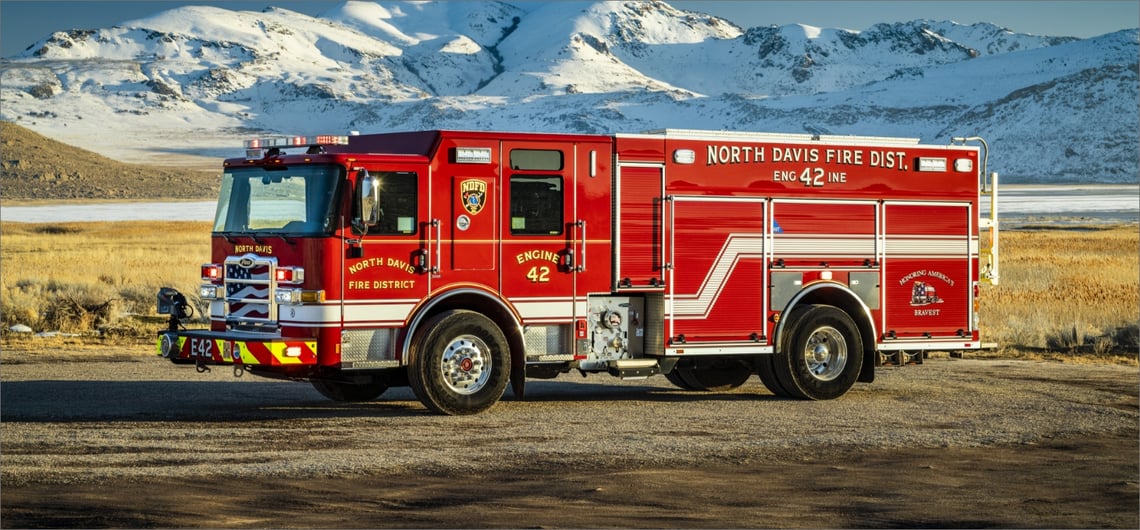
Increasing complexity in firefighter emergency response is fueling the need for more versatile, high-performance fire apparatus.
In this blog, we’ll examine multipurpose fire trucks, explore types, features and attributes, and demonstrate how these combination vehicles can enhance your department’s ability to serve its community.
What is a Multipurpose Fire Truck?
Multipurpose fire trucks are vehicles which combine features, functionalities and equipment to meet a variety of firefighting and emergency response needs.
Departments can customize multipurpose firefighting apparatuses to fit a range of conditions, such as adding hose/nozzle options, extending aerial reach, increasing rescue equipment or expanding emergency medical service (EMS) capabilities.
Types of Multipurpose Fire Trucks
Multipurpose fire trucks are designed to bring versatility to emergency response. They are often reimagined versions of traditional purpose-built fire apparatus tailored to expand a department’s ability to address the needs of the community.
Quint
Buffalo Fire Department’s Ascendant® 100’ Heavy-Duty Aerial Tower features a 510 hp PACCAR MX-13 engine, a 300-gallon water tank and a 2000 gpm pump.
Quint is short for ‘quintuple combination pumper.’ It is a combination pumper and aerial apparatus named for the five main firefighting tools it carries: a water tank, pump, supply hose, ground ladders and an aerial device with a permanently attached waterway. Introduced over a century ago, modern quints provide increased stability, maneuverability and firefighting capabilities.
Quints can dramatically increase a department’s versatility by providing a single resource for initial fire attack and ongoing aerial support. Similarly, quints can save money by purchasing a single vehicle with multiple functions.
As with any new apparatus, determining if a quint will be a good fit for your department begins with a thorough review of your department's needs, mission and personnel.
Learn more about quints, including a full review of NFPA requirements, in this helpful blog post.
Combination Rescue
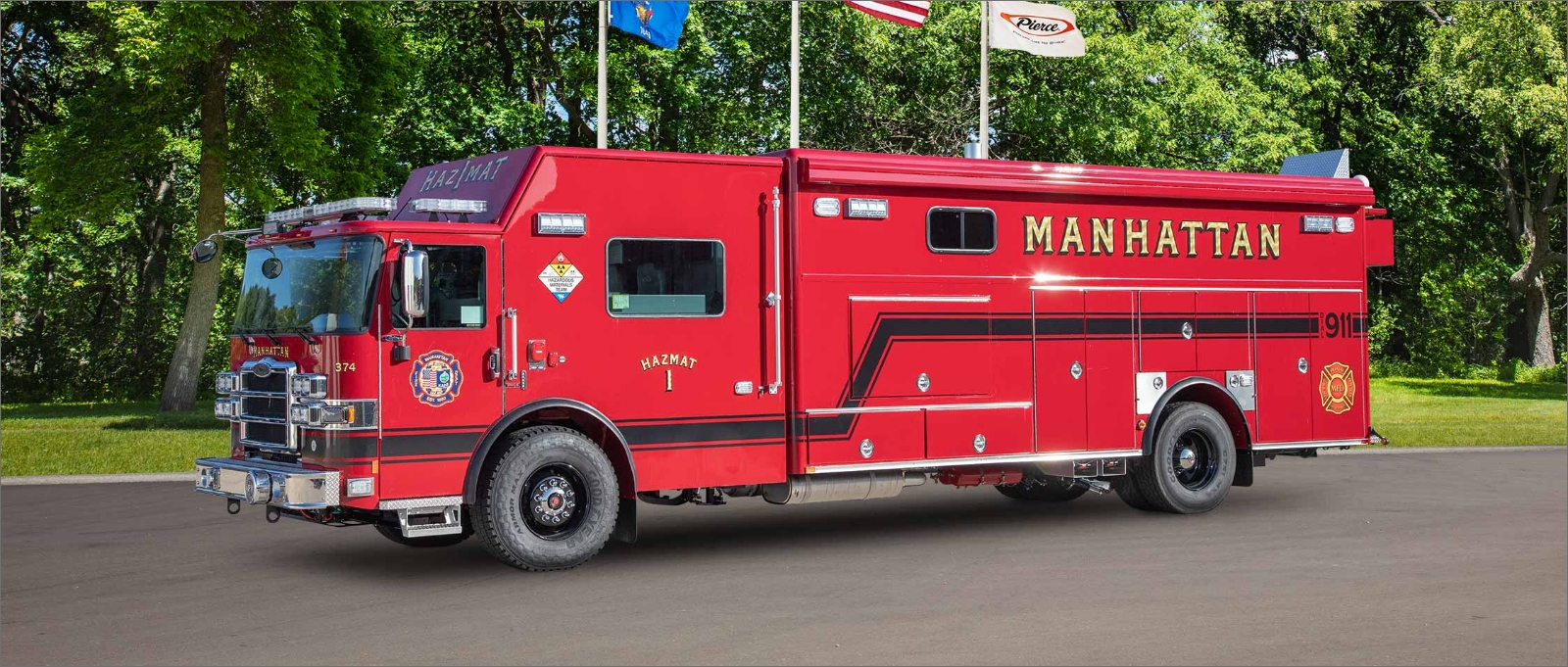
The Manhattan Fire Department’s recent combination rescue fire truck featuresTAK-4® Independent Front Suspension and the Command Zone™ electronics system.
A combination rescue combines the best features of a walk-in rescue with the storage of a walk-around rescue. It is a specialized vehicle dedicated to carrying tools and technologies needed to respond to a variety of emergency situations.
Read more about finding the best rescue apparatus for your department.
Rescue Pumper
Rescue pumpers can be equipped to support structural fires and can also respond to emergency scenarios such as accidents, hazmat situations, water rescue, EMS calls and more.
Rescue pumpers are popular multipurpose vehicles as they allow departments to improve EMS response by optimizing equipment storage with additional fire suppression equipment and capabilities.
PUC Rescue Pumper
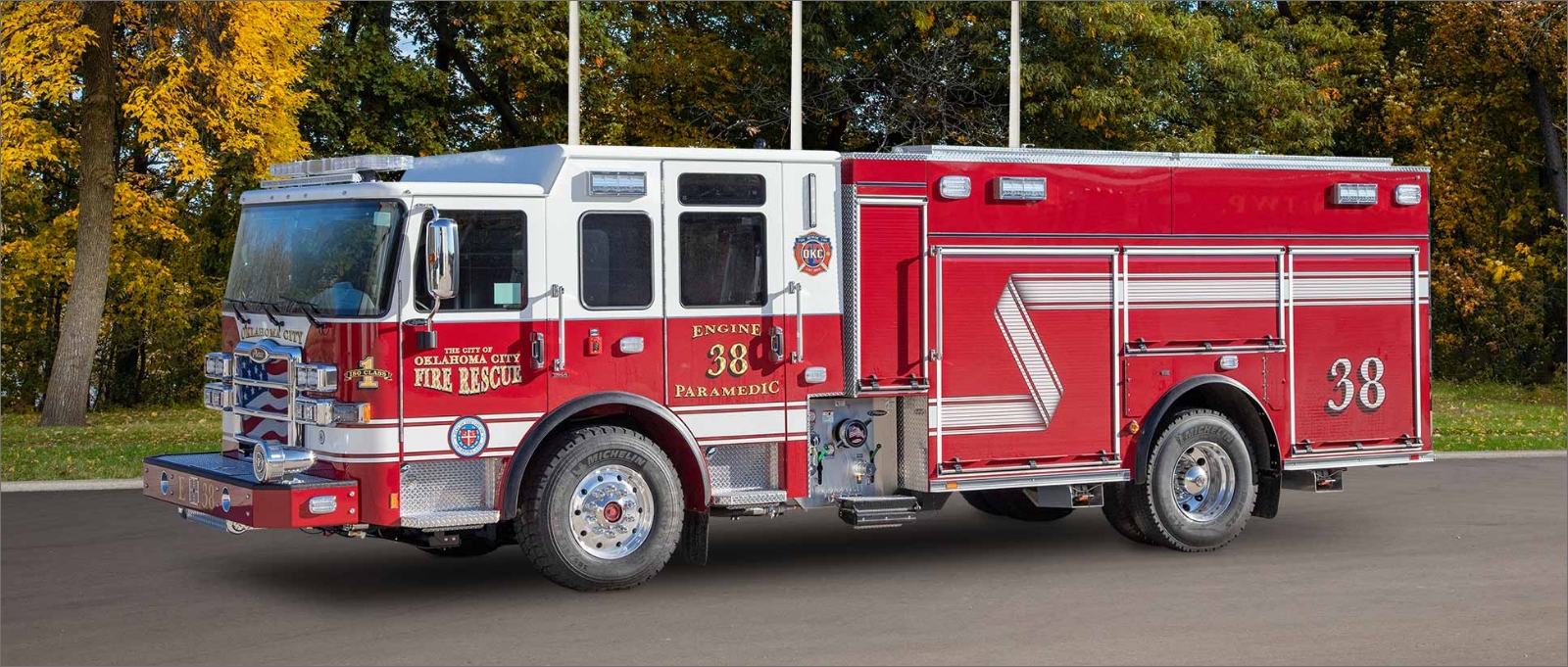
The Oklahoma City Fire Department recently took delivery of a PUC on an Enforcer™ chassis with a 450 hp Cummins L9 engine, 750-gallon water tank and a 1500 gpm pump.
Another approach to enhancing the functionality of a firefighting apparatus is to add a design element to improve virtually every aspect of the vehicle’s use. The Pierce Ultimate Configuration, PUC™ for short, eliminates the pump house, moving the pump forward below the cab.
The PUC configuration reduces overall vehicular space used for fire suppression and maximizes space for equipment. The design also allows for a shorter wheelbase, which enhances maneuverability and improves the angle of departure. The PUC is available on pumpers, rescue pumpers, tankers and aerials.
Heavy-Duty Rescue Pumper
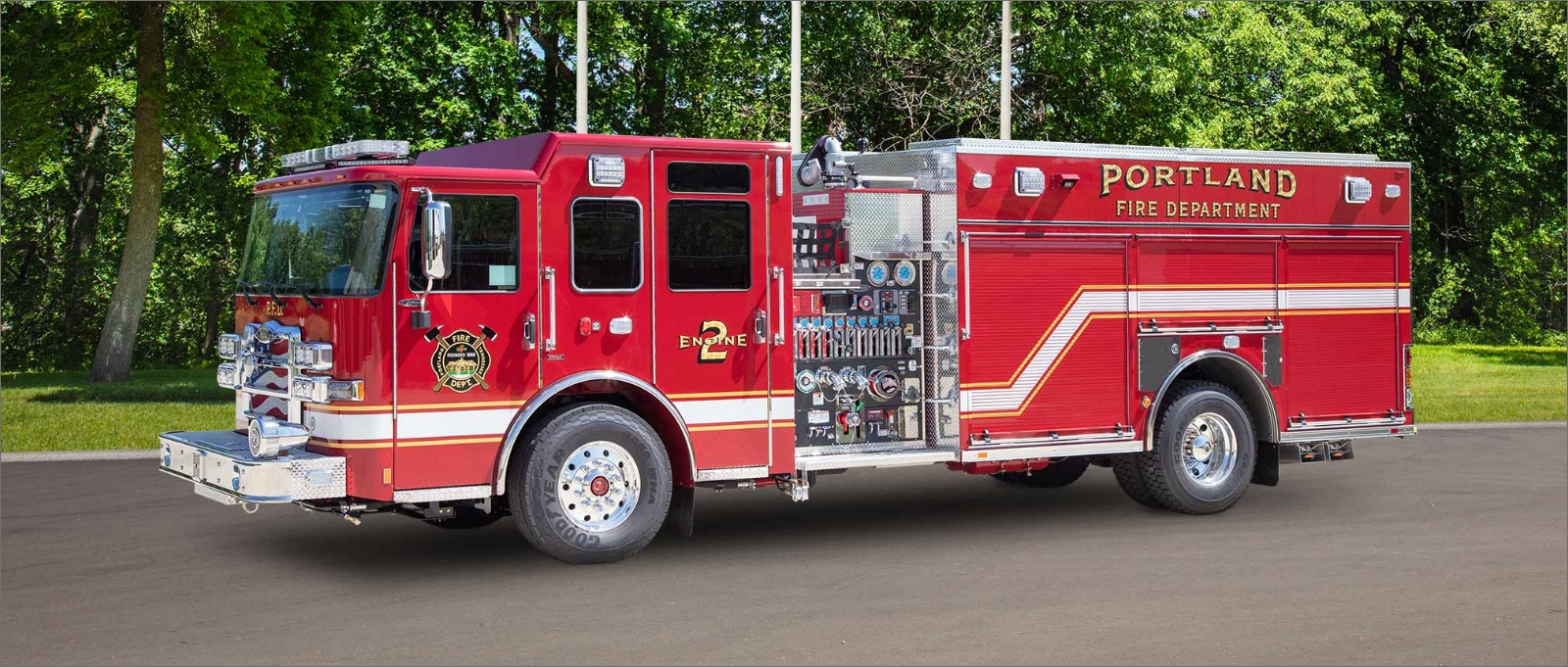
Portland Fire Department’s heavy-duty rescue pumper on an Enforcer™ chassis features a 500 hp Cummins X12 engine, a 750-gallon water tank and a 2000 gpm pump.
Pierce’s Heavy-Duty Rescue Pumper (HDRP) increases fire suppression and rescue readiness with a multipurpose vehicle built to meet a department’s unique storage, water and durability needs.
Heavy-Duty Rescue Pumpers utilize advanced storage strategies to house essential equipment with up to 500 cubic feet of storage space and 800 pounds of carrying capacity. Water tanks at 500, 750 and 1000 gallons are available with low hosebeds for safer access. Heavy-duty construction includes 3/16” thick flooring, an aluminum body and an innovative underbody structure, which maximizes strength in heavily loaded areas.
In addition to dramatically increasing firefighters’ versatility and effectiveness, the HDRP is a formidable addition to any department which demands optimal storage and reliable strength.
Pumper Tankers
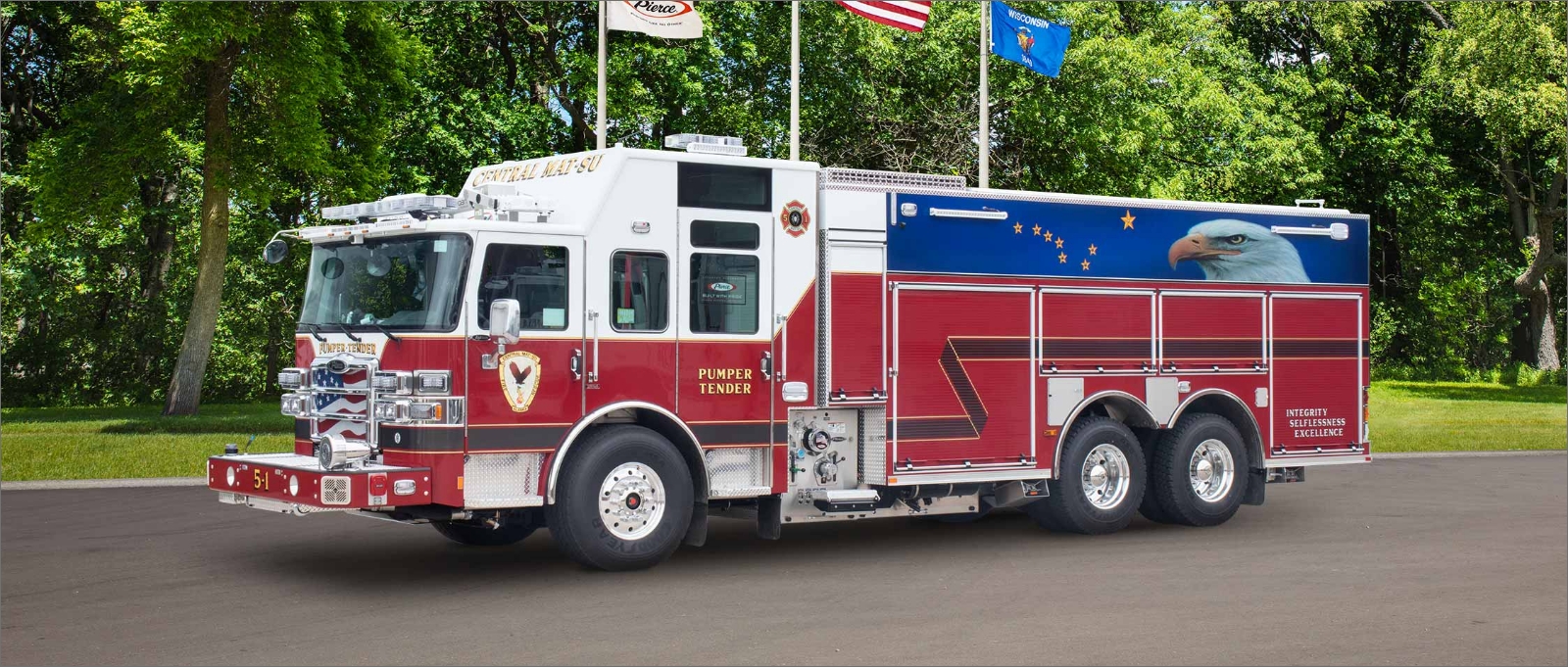
Central Mat-Su’s pumper tanker features a 2100-gallon water tank with a Pierce PUC™ Hydraulic 1500 gpm pump.
Pumper tankers, also referred to as ‘pumper tenders,’ are vehicles designed to bring water to fire scenes. Often described as a mobile water supply, Pierce pumper tankers can carry up to 3000 gallons of water and a variety of pump offerings.
Pumper tankers are multipurpose firefighting vehicles designed to provide water transport (tanker) and deployment (pumper). Pumper tankers enhance a department’s ability for rapid response—deploying water while a continuous source can be established and extending a department’s service area by providing a water source in rural or otherwise isolated areas.
Multipurpose fire trucks provide powerful combinations of equipment and functions which increase a department’s versatility while improving equipment and cost efficiency.
Whether you’re expanding your fleet or replacing older apparatus, Pierce can help you choose the configurations, components and combinations to best fit the needs of your department and your community.
Learn more about the critical considerations in the fire truck design and development process, or you can download this free step-by-step guide as a tool to help your fire department and municipality understand the steps needed to build a fire truck.
Do you have any additional questions about multipurpose fire trucks? Let us know in the comments!